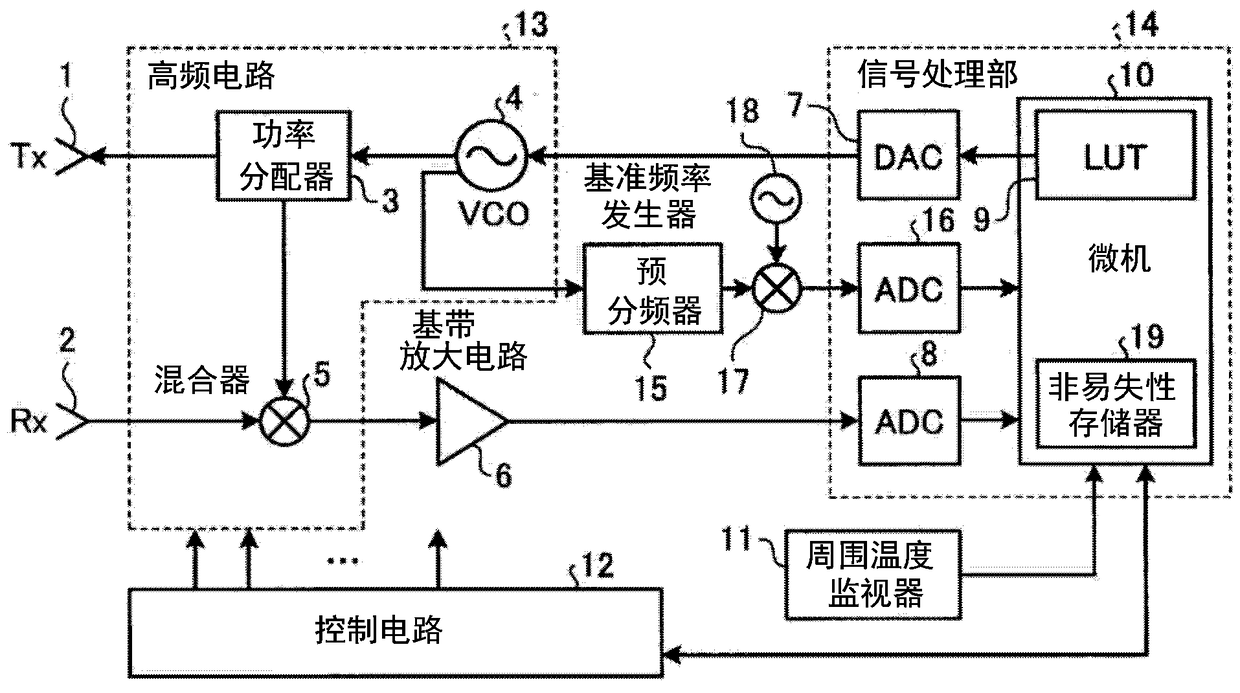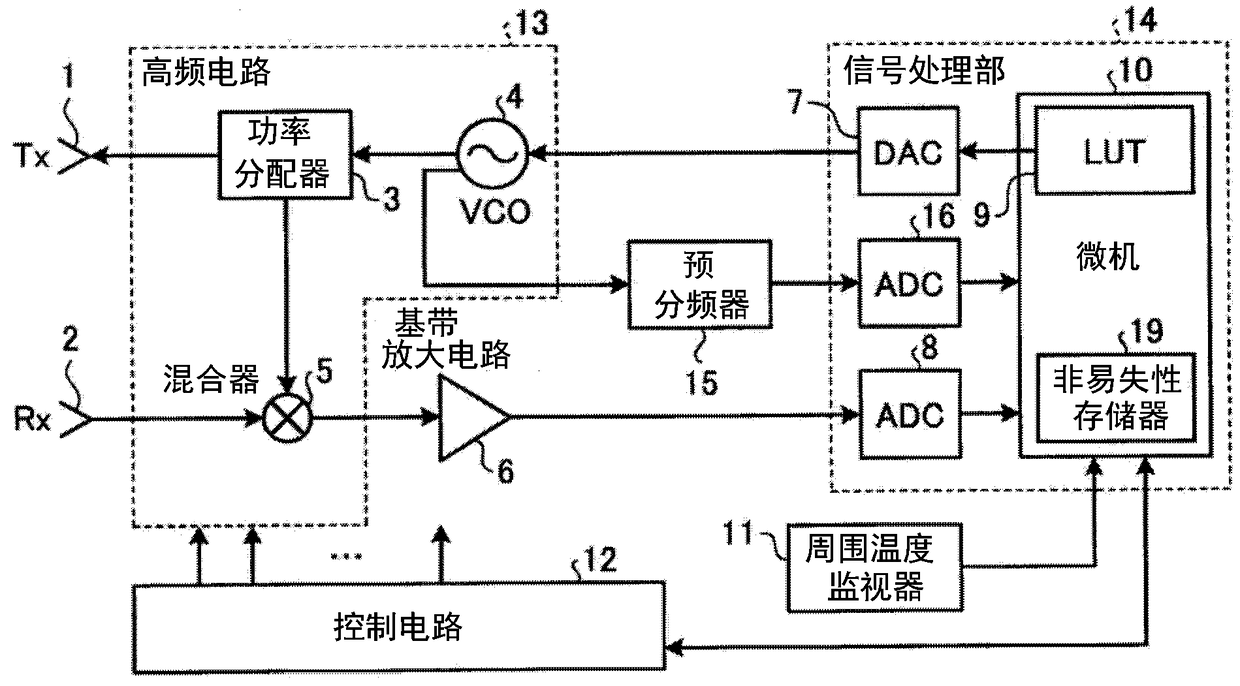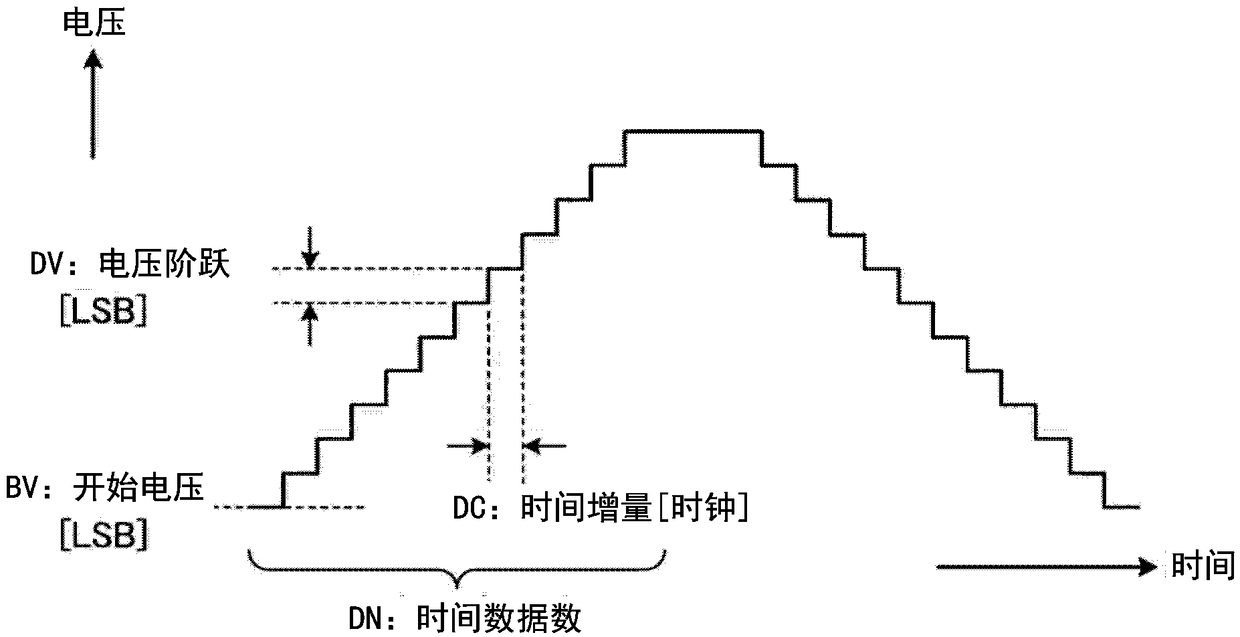Fm-cw radar and method for generating fm-cw signal
A FM-CW and radar technology, applied in the direction of reflection/re-radiation of radio waves, use of re-radiation, measurement devices, etc., can solve problems such as disadvantages, reduce mass production inspection time, and cannot cope with changes in VCO characteristics, and achieve coping characteristics. effect of change
- Summary
- Abstract
- Description
- Claims
- Application Information
AI Technical Summary
Problems solved by technology
Method used
Image
Examples
Embodiment approach 1
[0036] figure 1 It is a block diagram showing the configuration of the FM-CW radar according to the first embodiment. The FM-CW radar involved in Embodiment 1 is an FM-CW radar using frequency modulation based on the FM-CW method, such as figure 1 As shown, it is composed mainly of the following structural elements, namely: a high-frequency circuit 13, which radiates a transmission signal as an electric wave to space via a transmission antenna 1 (Tx), and transmits a signal to the air via a reception antenna 2 (Rx). The reflected wave from the target object of the transmitted radio wave is received; the signal processing unit 14 converts the analog signal output from the high-frequency circuit 13 into a digital signal, and calculates the distance to the target object and the target object The speed is detected, and if necessary, the orientation of the target object is detected; and the control circuit 12 controls various control voltages supplied to the high frequency circuit...
Embodiment approach 2
[0116] In Embodiment 1, calculation processing in the case of approximating the V-f curve using a quadratic function has been described as correction processing using polynomial approximation. That is, Embodiment 1 is a method of directly calculating a voltage initial value using a quadratic function. On the other hand, Embodiment 2 does not directly calculate the initial value of the voltage, but proposes a method of using a solution based on an iterative method using an approximate solution, thereby even using a polynomial with a third degree or higher or other methods including an exponential function. The function can also approximate the V-f curve.
[0117] Hereinafter, in this embodiment, as an example of functions other than quadratic functions, refer to Figure 8 to Figure 12 The calculation processing when the cubic function is used will be described. Figure 8 It is a flowchart showing calculation processing of an initial frequency value and an initial voltage valu...
Embodiment approach 3
[0145] In Embodiment 1, the embodiment in which the update processing of LUT 9 is performed by combining the frequency calculation processing using phase calculation and the correction processing using polynomial approximation was described. However, in Embodiment 3, the correction using time error calculation A description will be given of an embodiment in which the processing is replaced with the second and subsequent update processing of the LUT9. In addition, the basic structure is the same as figure 1 or figure 2 The structure of Embodiment 1 shown is the same or equivalent, and the description of the specific structure will be omitted.
[0146] Next, refer to Figure 13 and Figure 14 , the main parts of the FM-CW radar according to Embodiment 3 will be described. Figure 13 It is a flowchart showing the flow of correction processing using time error calculation in the microcomputer 10 . Figure 14 This is a diagram for explaining the concept of "correction process...
PUM
 Login to View More
Login to View More Abstract
Description
Claims
Application Information
 Login to View More
Login to View More - R&D
- Intellectual Property
- Life Sciences
- Materials
- Tech Scout
- Unparalleled Data Quality
- Higher Quality Content
- 60% Fewer Hallucinations
Browse by: Latest US Patents, China's latest patents, Technical Efficacy Thesaurus, Application Domain, Technology Topic, Popular Technical Reports.
© 2025 PatSnap. All rights reserved.Legal|Privacy policy|Modern Slavery Act Transparency Statement|Sitemap|About US| Contact US: help@patsnap.com



